Colin Cowell : NACCHO Social media
How a national Aboriginal health authority used social media to bridge the divide and Close the Gap.
“In the lead up to 2013 Federal campaign NACCHO developed a comprehensive social media/Twitter based political campaign built around the simple key message that “Investing in Aboriginal Community Controlled Health makes economic sense”. It was a social media campaign that engaged millions of impressions to our targeted audience and produced many positive outcomes.”
Picture above: Former NACCHO chair Justin Mohamed launching new NACCHO messaging and online/corporate branding 2013 during the 2013 election.
By Colin Cowell NACCHO’s National Communications and Media Advisor 2012-2014.Now freelance Spin Doctor developing Social media platforms and policy for organisations.
In September 2014 I posted tweet number 22,707 to the 10,250 followers of @NACCHOAustralia the twitter account for the National Aboriginal Community Controlled Health Organisation. This was my last tweet after two and half years as NACCHO’s National Communications and Media Advisor and it was now time to reflect on what NACCHO’s social media had achieved bridge the divide and Close the Gap during that period and share our experiences.
NACCHO I am pleased to report is now a leader in Indigenous health online, mobile and social media achieving record followers and targeted reach utilising Twitter, Facebook, NACCHO APP. NACCHO TV that are totally integrated with our online Aboriginal Health News Alerts and website.(see below for details and statistics)
This article gives a brief overview on how organisations can bridge the divide between research, policy and advocacy, and what have been NACCHO big successes, lessons learnt and experience using new social media.
Back in March 2012 NACCHO who represents over 150 Aboriginal Community Controlled Health Services (ACCHS) and is the national authority in comprehensive Aboriginal primary health care had a need to improve the understanding and communication between NACCHO and the main groups involved in the policy process: government, politicians, academics, stakeholders, the media and the community sector.
As part of NACCHO’s Strategic plan 2011-12, social media was identified as an effective means of communicating key corporate objectives to connect, engage and inform members, their communities and stakeholders into the future.
NACCHO wanted to use social media to keep a focus on the battle to Close the Gap within a generation and to ensure governments at all levels address the wide range of social issues faced by many Aboriginal Australians.
NACCHO’s social media communications strategy supports these objectives:
• Promoting, developing and expanding the provision of health and wellbeing services through local Aboriginal Community controlled Health services.
• Liaison with organisations and governments within both the Aboriginal and non-Aboriginal community on health and wellbeing policy and planning issues.
• Representation and advocacy relating to health service delivery, health information, research, public health, health financing and health programs.
• Fostering cooperative partnerships and working relationships with agencies that respect Aboriginal community control and holistic concepts of health and wellbeing.
Our NACCHO communications strategy came down to 3 basic words connect, engage and inform
Many of the NACCHO board members, our member organisations and stakeholders were initially cautious of social media as a marketing/public relations medium because they had heard so many negative stories about social media.
The NACCHO board endorsed a comprehensive social media policy that put procedures and protocols in place for our organisation and networks that would avoid embarrassing “gaffs” and achieve great positive partnerships and outcomes through the use of social media.
The depth and complexity of our Aboriginal controlled health services provided to our communities and the professionalism of the staff across all member services is inspirational and it is that message NACCHO went on to share with the broader non-Aboriginal community in the social media space.
Over two years I developed a wide range of internet based communication platforms to ensure the good work of NACCHO and its members was better recognised and supported by all sides of politics and the broader community.
Integrated media Projects developed.
- New Website: Designed and edited a new corporate website www.naccho.org.au .Full of Aboriginal health content, history and NACCHO role as the national authority to reform, promote and research.
- New Daily Aboriginal Health News Alert site: Attracted 1,203 subscribers and 245,000 views to www.nacchocomminque.com . All content was integrated with the NACCHO website by subject and had the ability to be shared in all social media platforms
- New NACCHO Branding: Designed a new branding for all online communications
- New Twitter account: Developed one of the most influential Indigenous accounts with 23,100 tweets to 10,127 followers.
- New Facebook account : Developed over 3,131 followers reaching up to 65,000 community member and stakeholders per week
- New NACCHO newspaper: In conjunction with the Koori Mail introduced Australia’s first printed Aboriginal Health newspaper that was available also online as a download
- NACCHO TV; Created in YouTube to share NACCHO videos
- New NACCHO APP: Designed Aboriginal health app with geo location system and access online to support networks for issues such as depression, suicide, alcohol. smoking, healthy lifestyles etc
Summary of Social media impact in past 12 months
Source: NACCHO Annual Report 2014 Online here
Quality content designed for online and mobile was at the heart of this integrated approach to development, implementation and marketing
Creating a major Social media presence also resulted in the national coverage included over 150 radio interviews across Australia, detailed NACCHO policy in The Australian newspaper and featured the NACCHO Chairperson in numerous live TV interviews on Sky News, ABC News 24 and ABC News Breakfast. Radio news across
This increase in profile in mainstream, Indigenous and social media has been instrumental in providing NACCHO with greater access to policy makers and provided a solid platform for future relationships with all side of government.
Our new social media platforms was an important part of our 2013 Federal election strategy, enabling NACCHO to analyse and respond to pre-election policy announcements and ensure key political stakeholders understood the benefits of the Aboriginal community control health investment model.
Examples of very successful Twitter Campaigns that NACCHO was involved in
Our Aboriginal communities should take health advice from the fast food industry
Eventually went global with in excess of 20 million impressions
And Croakey Indigenous Health May Day that generated 25 million impressions
Eight tips for using Twitter at Health summits, conferences and workshops
The use and popularity of social media have thrown open the doors of health-related events. Now a statement made during a conference plenary, a new health policy set by a government, or a funding decision by a major donor, can all be read about watched or heard by thousands of interested onlookers in our communities and all over the globe inn an instant.
Since 2013 NACCHO has use Twitter for all its summits, AGM’s and workshops and we would estimate that our tweets have generated over 50 million impressions
Based on analysis of the use of social media around such “moments”, this brief guide offers eight tips for making the most of one social media platform-twitter- around the next health event on your calendar.
1.Remember they are following you
If you have 100 followers or a million, they track you because of what you say and who you are. Try to relate what you hear during an event to your own knowledge and experience. “ Speak your world” by sharing your reactions and opinions openly. That’s what your followers want to hear.
2.Be their ears and eyes too
For every person physically present during an event, there are probably hundreds (if not thousands) of remote participants watching from afar, many wishing they could have had the same opportunity. Try to stay conscious of what your followers and other remote participants might be most interested to read, see or find out – and not only what you want to tell them.
3.Use the event # hashtag
The more people who use the same hashtag, the more likely they are to connect with one another and share thoughts / ideas. Find out the #hashtag the organizers have chosen for the event and use it- consistently.
For Campaigns and conference you can register your #hash tag thru symplur and quantify your success
Eg #NACCHOsummit (2013)
http://www.symplur.com/healthcare-hashtags/nacchosummit/
4.Be original
Your tweets will be valued most by your followers if they include something they could not easily obtain or find out elsewhere : your opinion; a useful link to an interesting site or article, a relevant hashtag (other than the event hashtag); another users username. Don’t hit the retweet button without including your own view or added value, and avoid posting overused rhetoric about an issue. Stay fresh.
5.No time like the present
Tweet as soon as something grabs your attention or evokes a reaction in you. Share your impression or mood as well as the information content. If someone posts something you agree/disagree with, say so and shy, or ask a follow-up question of your own. It is hard to find the time when you are taking part in an event, but commenting and responding in real time to others posts adds real depth and value to discussion.
6.Quote of the day
If you must tweet direct quotes, listen out for particularly incisive or original comments, and quote them for what they say, not who said them. Find the speakers username if you have time. Avoid repeating what the high profile speakers say, they will be tweeted and reported by everyone.
7.A picture a thousand words etc…
Use the same rules for photos/videos as you do for text content: Add value for your followers and give them something they cannot get elsewhere, such as photos of presentation, conclusion slides, new data or the cover of a publication you have seen for the first time at an event. Avoid photos of meeting rooms and high profile speakers.
8.Be a twitter advocate
Remind other delegates that they can also Tweet from the event. If someone tells you something interesting/important, encourage them to Tweet about it. If they are not Twitter users, take a few minutes to tell them why they would benefit if they were. Encourage them to sign up and follow you !
Our thanks to @francetim and @GlobalHealthTom for sharing these hints with us
How to guide your social media efforts toward success
Finally whether you are a social media beginner or you have been using it for a while, answering these key questions will help guide your social media efforts toward success.
1. Who is my audience?
Your marketing efforts will be stronger if you can identify your target market first.
2. Which social media platforms does my audience use?
Armed with information on who makes up your audience, the next step is to determine which social media channels they use and direct your efforts accordingly.
3. What do I want to achieve with social media?
Do you want to increase awareness of the causes Do you want to drive more traffic to your hospital website? Without clear goals in mind, you won’t know how to measure your social media effectiveness. It’s important to set social media goals that are specific, measurable, and achievable within a specific timeframe.
4. What is my social media budget?
There is a misconception that social media is completely free. While it’s true that it is free to set up an account on all the major platforms, most offer premium features which may be worth considering
5. How much time can I give to social media?
Time is another cost you need to factor in to the social media equation. To achieve results and credibility you have to be prepared to devote time regularly to producing and promoting content and engaging with your audience.
6. What type of content will I create?
Your answer to the previous question may influence the type of content you will create for social media. Do you have time to write regularly for a blog? Would it be better to make short videos for YouTube instead?
7. What are my Industry peers doing on social media?
You can learn a lot by taking some time to observe what your peers are doing online. Which social media platforms do they use? What type of content do they share? How does their audience respond to them? What are they doing really well? What aren’t they currently doing that you could do well?
8. Who is the best person to handle social media?
You may wish to take full responsibility for maintaining your social media presence, but if you are giving the task to someone in your organization, or hiring outside help, you need to
Summary
This increase in profile in mainstream, Indigenous and social media has been instrumental in providing NACCHO with greater access to policy makers and provided a solid platform for future relationships with all sides of government.
If you require any further assistance please contact Colin Cowell Spin Doctor


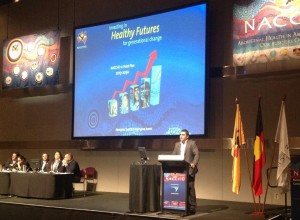


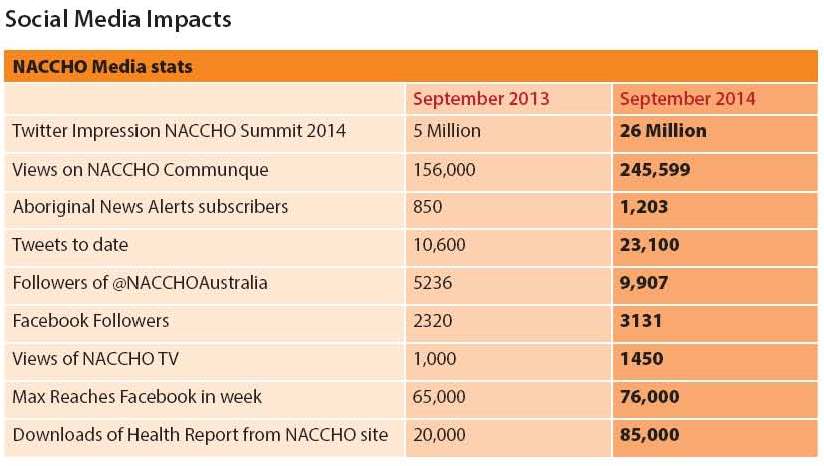
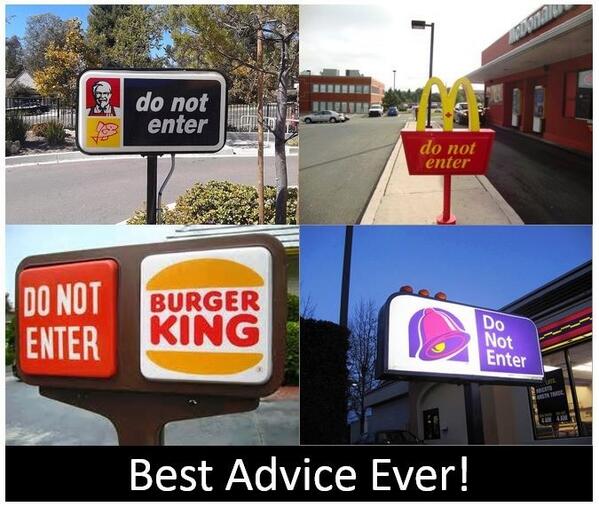
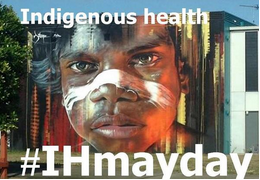
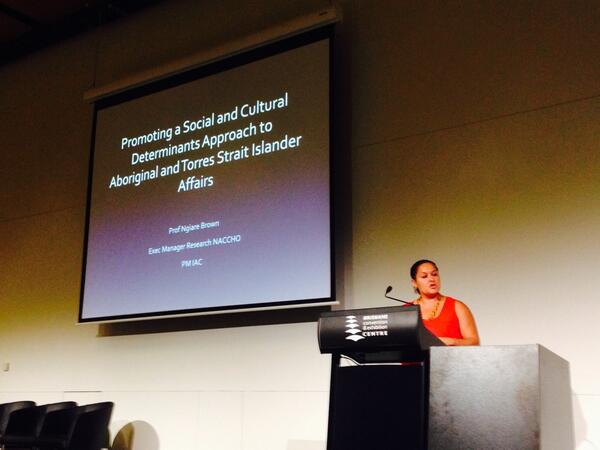
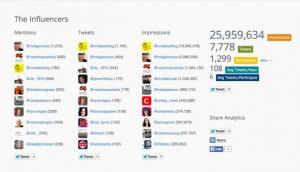
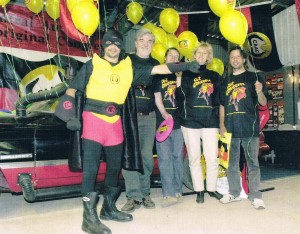
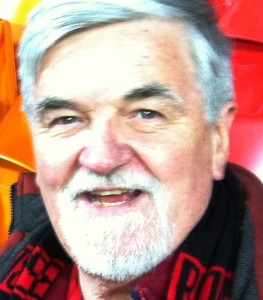
No comments yet.